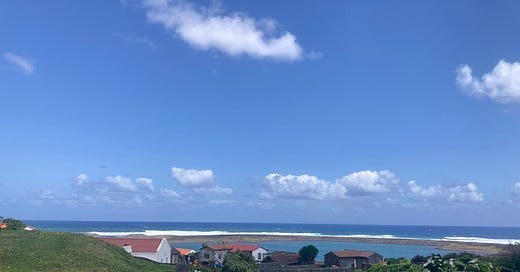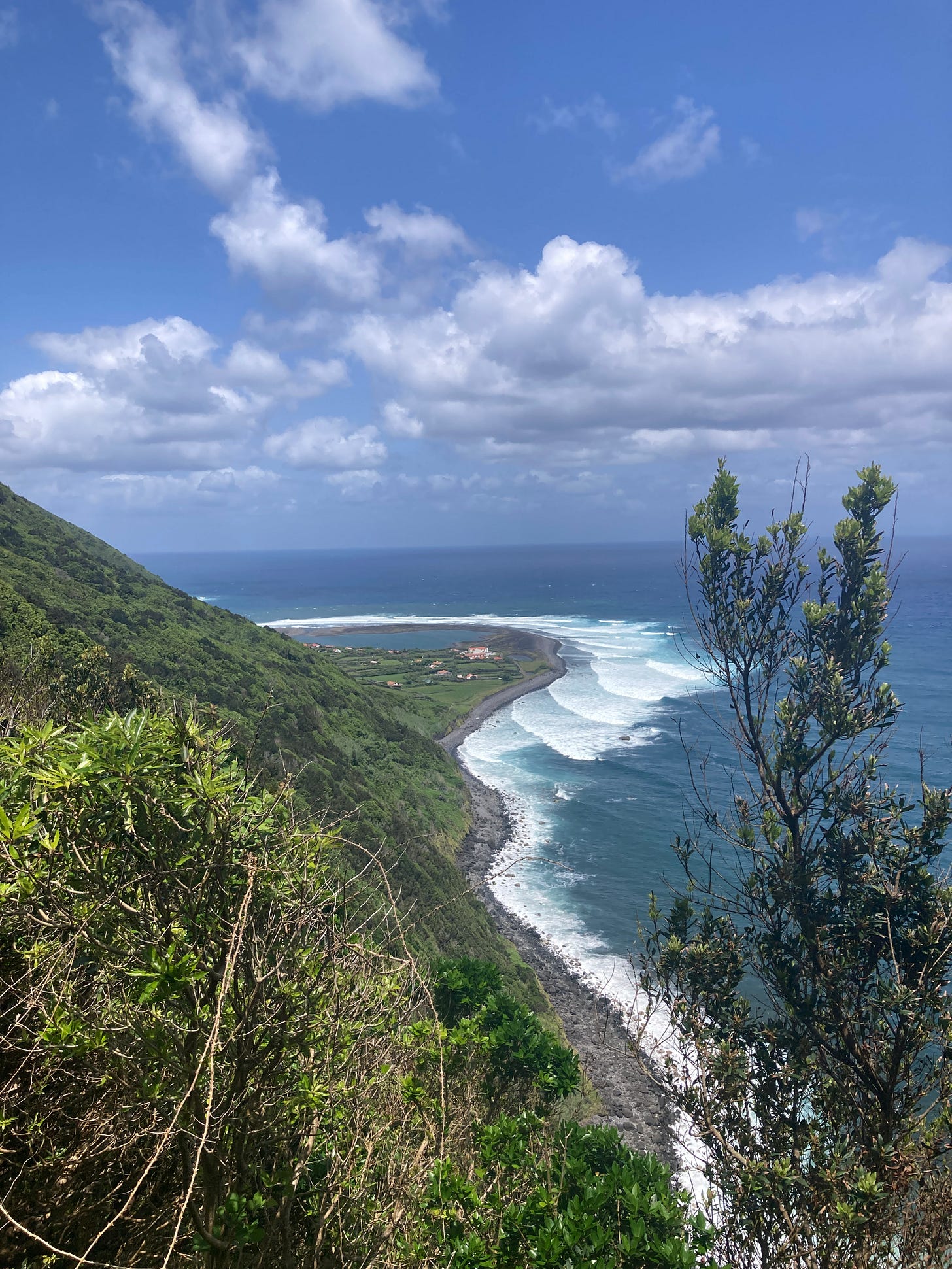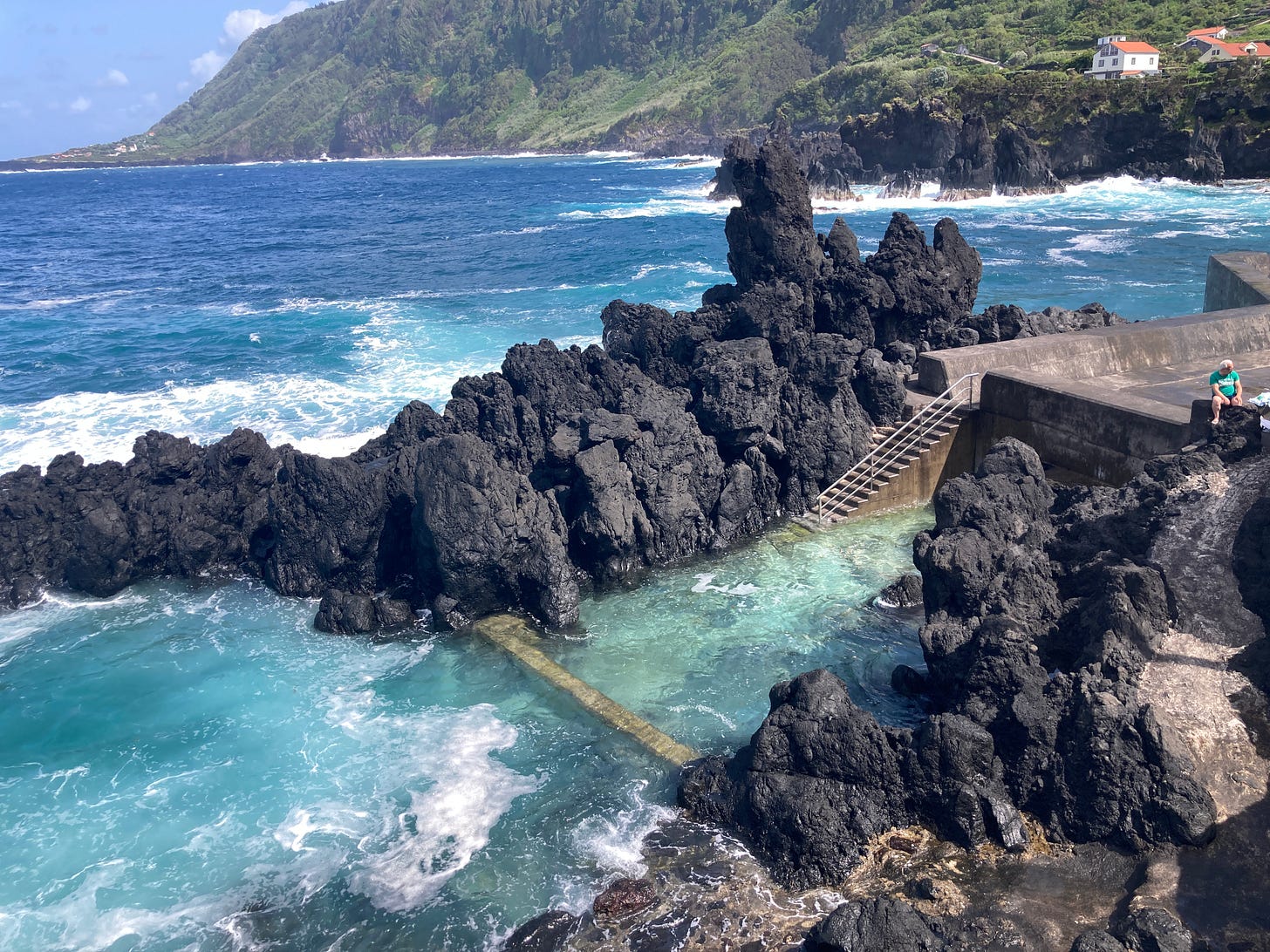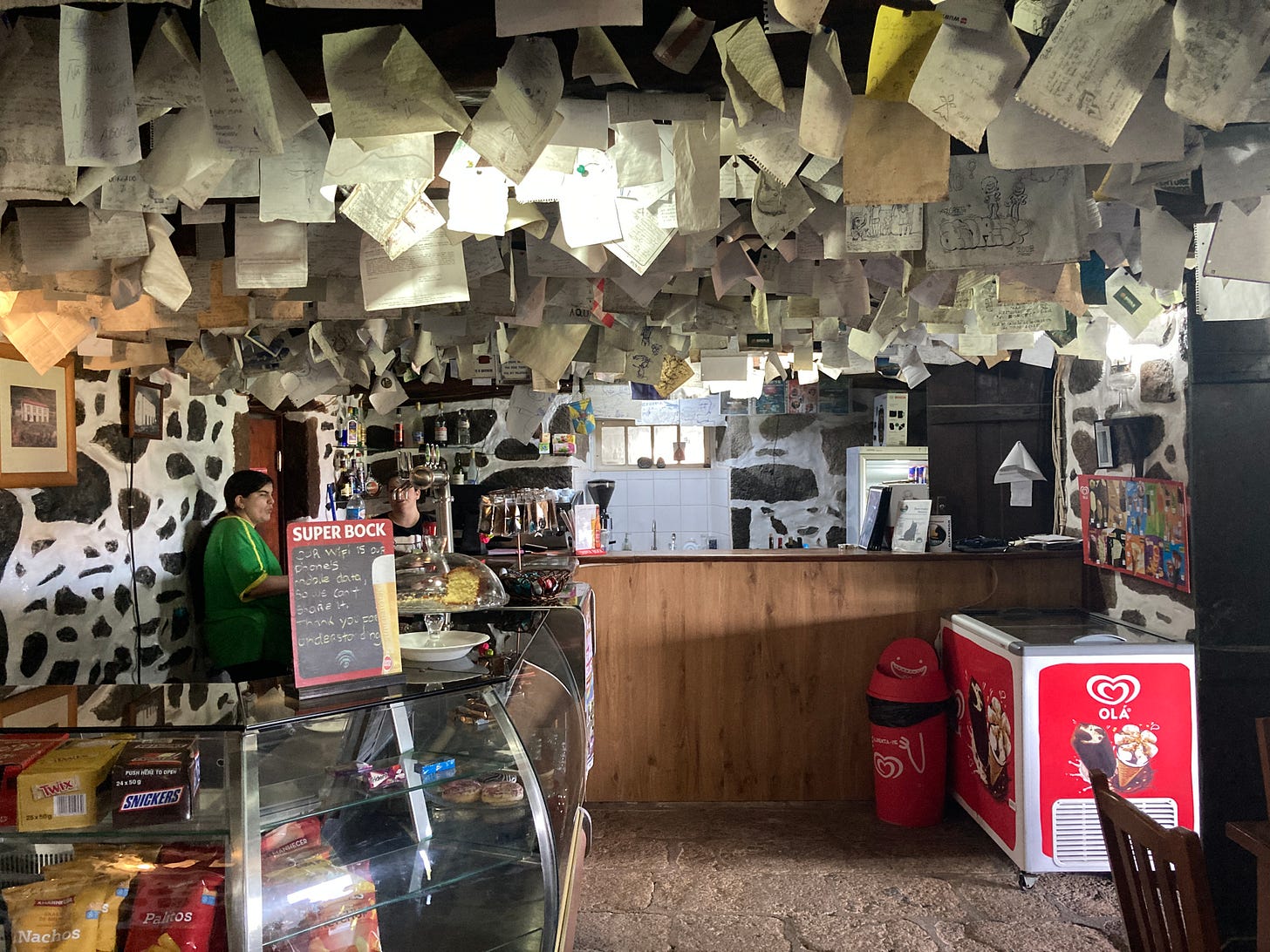Straight Out Of Horta: Cruising The Wild Azores
Tricky anchorages and spectacular landscapes on the volcanic edge of Europe
I woke up this morning at 7:30 am. That is about 2 hours later than usual. It had been an unsettled night in the anchorage at Velas, on the island of Sao Jorge. The wind was up, and gusting into the mid-20s, so there was lots of wave energy to give Laughing Gull some yip and yaw. The shearwaters who nest nightly in the cliffs that loom high above the harbor kept up their spirited and voluble chatter, which sounds eerily half-human. And sometime in the wee hours a coastal freighter churned past the breakwater and reversed itself into the commercial dock nearby. The loud thrum of its prop, amplified by LG’s hull, was just the sort of oddball noise that will wake a skipper up. It is always a mesmerizing show when calm and consummate seamanship is required to maneuver a big ship in a small space, in lots of wind. Still, I somehow felt well rested when I finally rose, thanks to the extra hours and an extra blanket, which created a warm cocoon against the cool overnight temperatures.
Lots of sailors encourage cruising in the Azores, but it is not casual cruising. Harbors are few and far between—each island has maybe one or two possibilities—and they are mostly deep and tricky, with indeterminate holding. The shorelines are steep, volcanic, rocky, and forbidding. Even if you prefer a marina, getting into one on any given day is a lottery, especially in any sailboat over 40 feet.
Here on Sao Jorge, we are anchored in more than 40 feet, and on the first night another boat dropped too close, even in Azorean terms (most anchorages require close proximity), and especially with a major wind shift due. I didn’t say anything, because the golden rule of anchoring is to treat latecomers trying to squeeze in as you would like to be treated yourself. When the shift hit—thankfully, in the morning when I was up, and not in the middle of the night—I found myself fending his bow off as LG and his boat came together like long-lost lovers. I bid him a loud good morning (he was still sleeping). He and his wife appeared on deck, and drowsily accepted their fate. Up their anchor came and they moved to a deeper and more spacious part of the anchorage.
Once you settle in, and feel the boat is secure, though, there are major rewards in visiting different islands. It took me a windy night or two to feel confident LG’s anchor was well and truly set, but if you haven’t dragged after a day you probably aren’t going to drag at all. That opened up the charming town of Velas to relaxed exploration, a nice 5K run along the coast, and a hot shower followed by a cold beer. The following day, James and I rented a car and explored the north coast, and some of the beautiful coastal plains, called fajas, created over time by lava flows meeting the sea, or simple rockfall from the vertiginous heights above. Small communities have taken root on many of these inviting accidents of geology. Many declined to have roads built, in order to preserve their remote and distinctive character, and are accessible only by foot or quad bike. Walking between them on rugged trails immerses you in some of the most beautiful and rugged landscapes you can imagine. Soaring, verdant, cliffs. Endless rocky beaches and coastline. Big surf pounding its way ashore. Pretty, well-tended homes and gardens, with red slate roofs.
These communities exist in a unique and uncertain liminal space, between land and sea, threatened by earthquakes and flood from one side and storms and surge from the other. On a peaceful day you understand why their residents are committed to being there, and a charming local bar just adds to the allure. Happening upon resilient human communities unlike any you have seen before, nestled among breathtaking land and seascapes is the reason cruising these islands is worth the challenge of highly variable weather and difficult anchorages. The kind and friendly people here live a simpler, less consumerist lifestyle, that values community and a deep connection to land and sea. It really is special.
As a side note: it is also notably nice to be in “Europe,” which seems less crazy, less divided, and more committed to making lives better than the land from which I set sail. Every community, no matter how remote, has extensive recycling. There is very little litter. Roads and other public infrastructure are well maintained, instead of left to crumble due to lack of investment. Families and children are outside in the early evenings, enjoying human connection and amity. Hardly anyone in public is staring at a phone. Supermarkets are filled with fresh, local produce, and the public beaches and squares are busy and appealing. Europe has plenty of problems and challenges, too. But politics and culture here exist within a frame that feels more familiar, more normal. I fly my American flag the right way up now, because I am abroad. Still, every day I am here makes me glad there is a more hopeful counterpoint to what is happening on the other side of the Atlantic. Which makes LG’s Atlantic crossing both a decisive change of longitude and a decisive change of outlook.
Anthropocene Notes:
We have a “poverty line.” How about a “wealth line” to go with it? An intriguing idea for anyone who thinks wealth inequality is a big problem:
Here’s the book that develops the argument for a “wealth line.” There must be a better and more appealing name for it than “limitarianism.” But that is a minor detail.
If you want to see where you rank on the global wealth scale (spoiler alert: in global terms you are way richer than you think), which can help you make choices about how much you really need and how much you can donate, this website has you covered. It also has good recommendations and research on where to donate if you are so inclined.
On the 50th anniversary of Jaws, it is worth considering how misunderstood great white sharks are. Can some intrepid photographers change how we perceive these amazing animals? Maybe.
If you liked this post from Sailing Into The Anthropocene, why not subscribe here (free!), and/or hit the share button below?
You can also find me onInstagramandBlueSky.(You can find me, but I have discovered life is better without social media, so I don’t post anymore).











Another beautifully written piece that makes me want to go where you go. Also want to mention I truly appreciate your recommendation, Tim. Enjoy your wonderful life as now the world is even more volatile than when this was penned last week... ~J